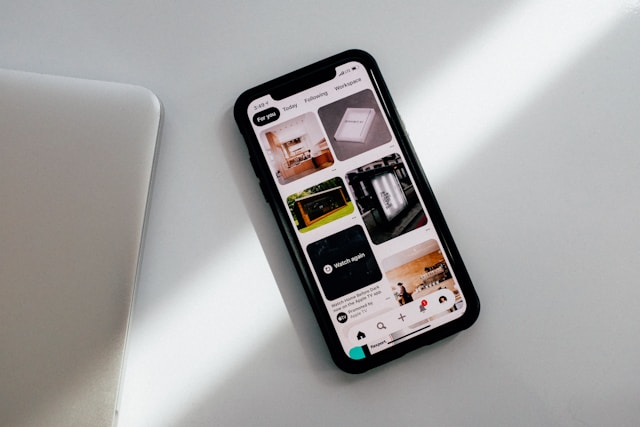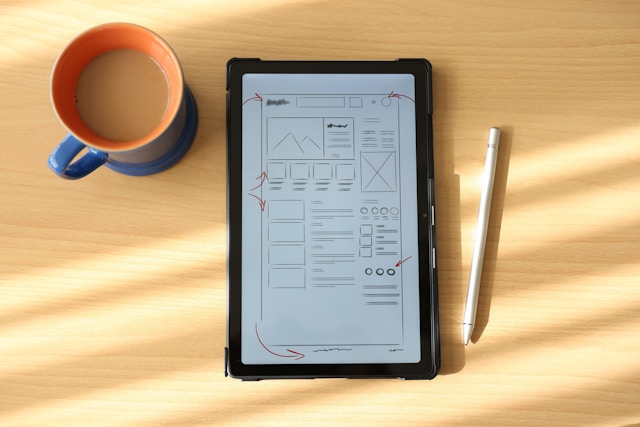The days of businesses focussing solely on functionality and aesthetics are far behind us.
Nowadays, most modern businesses have adopted the design thinking approach to establish meaningful relationships with their customers.
If you’re unfamiliar with the design thinking approach, don’t worry! Today, we shall explore the design thinking methodology and its importance. In particular, we shall focus on the design thinking principles that govern this methodology.
By the time you’ve finished reading, you’ll know how to create solutions that don’t just meet your users’ needs. Your solutions will also exceed them!
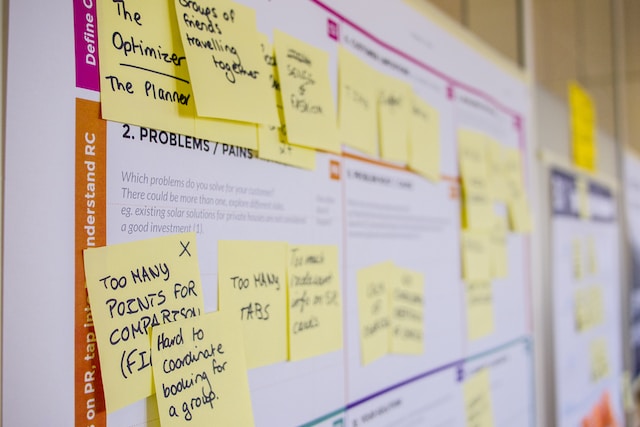
What Is Design Thinking?
Of course, if you’re unfamiliar with design thinking, you’re going to ask, ‘What is design thinking?’.
The design thinking idealogy focuses on user-oriented problem-solving, which propels UX designers/researchers towards innovation and creation.
The design thinking process includes a complete understanding of the user, their goals, pain points, and everyday tasks.
Ultimately, UX/UI designers employ the design thinking process to discover their users’ problems and resolve them.
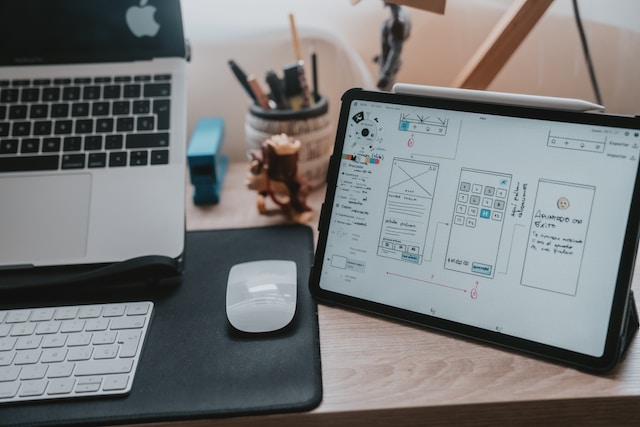
Why Is Design Thinking Important?
Interconnectivity and complexity have shaped the foundations of our world, whose online presence is only becoming more prevalent.
Due to the increasingly technological nature of the world, UI/UX designers have learned to expect sudden changes regarding users.
These changes often revolve around fluctuations in the user’s behavior or environment and, thus, have prompted designers to adapt creatively.
Therefore, the importance of design thinking resides in its ability to reveal unknown problems that your users have. By inspiring user-centricity, the design thinking process helps designers tackle these new challenges with their needs in mind. Overall, the design thinking process prepares UX/UI designers to evolve alongside their users.
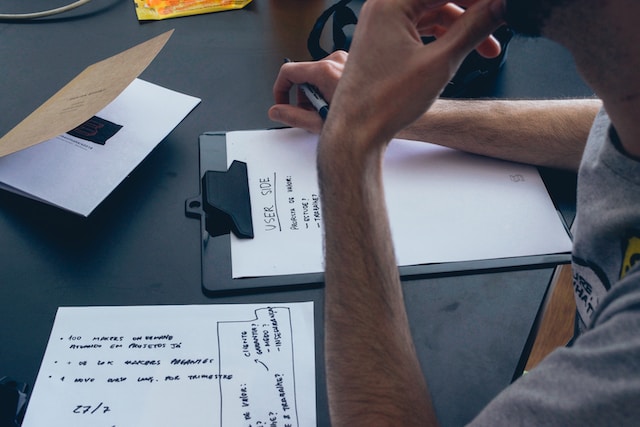
An Effective Design Thinking Process: The Principles of Design Thinking
The principles of design thinking serve as a testament to user-centric problem-solving. Stemming from these principles, UX designers can hone their innovative talents to exceed their users’ expectations.
Listed below are the five principles of the design thinking process.
Empathize With Your User
An effective design thinking process starts with an impeccable understanding of your users. When considering your users, take into account what they say, do, feel, and think.
Only by contextualizing your users on a sociological level can you empathize with their needs and desires. By acquainting yourself with these, you can create products that resolve their issues.
So, how do you start empathizing with a diverse range of users?
You start by engaging with and observing your target users. You must first situate the pain points within a user experience in order to formulate innovative solutions to said issues. To engage with your users and begin generating potential solutions, we recommend that you immerse yourself in their physical environment.
By observing where real users will typically use your product, you can determine how environments influence their interactions. From there, you can uncover answers to questions like:
- What are my users actually doing?
- What routines do my users have?
- Does noise level affect my users’ experiences?
- Do my users’ colleagues/friends influence their experiences?
- What time of day will my target audience usually utilize my products/services?
Note: When observing your target users, take into account the Hawthorne Effect and social desirability bias.
The next question is, how do you go about acquiring this observational data?
Conducting anonymous surveys is a great way to identify trends surrounding user problems. With an element of anonymity, your users can feel comfortable answering candidly, which bolsters the accuracy of your data.
Once you pinpoint issues, conduct user interviews, diary studies, or focus groups. Use this qualitative data to support your quantitative findings from your surveys. Most importantly, you will find out why your users feel the way they do.
Now, you have a solid, factual base to reference when coming up with creative solutions that meet your customer requirements.
Define the Problem
After having analyzed your findings from the ‘Empathize’ stage, you must then define your users’ problem(s).
Once you’ve defined the problem, you will have clarified the challenge that will guide the design process henceforth.
Due to the problem statement’s sway over the design process, it’s imperative that it’s addressed in a human-centered manner.
Specifically, you should prioritize creating functional products that enhance the daily lives of your users. Don’t be mistaken; you should prioritize business-oriented goals that relate to expanding your customer base. However, empathetic user-centricity is the only way to garner loyal custom, and thus, must take first priority.
When discussing your problem statement with your design team, you should assume the role of your users, employing their perspectives.
Utilizing your users’ perspectives guarantees an effective problem statement. An effective problem statement is human-centered, as discussed, but it will also inspire creativity while still offering reliable guidance.
From here, the design team can generate insight-rooted ideas that will then transform into problem-solving features and functions.
As a result, you will then be ready to progress to the next stage: the ideation stage!
Generate Ideas
You’ve acquired observational data that reveals who your users are as individuals in the ‘Empathize’ stage. You’ve also then analyzed that observational data in the ‘Define’ stage to produce a user-focused problem statement.
You’re now ready to create as many potential innovative solutions as possible, utilizing a vast array of different perspectives.
Your aim is to conduct thought-provoking ideation sessions that will stimulate free thinking and expand upon suggestions for problem resolution.
An effective way to go about this is to employ techniques such as bodystorming, reverse thinking, and the worst possible idea.
- Bodystorming: A technique that stimulates creativity whereby your design team acts as if the product already exists. The team practices this by using role-play and props.
- Reverse Thinking: A technique that requires you to imagine the opposite of what you want to achieve. You will then work backward to identify alternative solutions to your problem.
- The Worst Possible Idea: A technique that requires you to stand back from your project. By using this technique, you’ll emphasize what works about your solutions by exposing their pitfalls.
You should employ these techniques near the end of the ideation stage. In doing so, you can test the solutions that have the most potential before you enter the next stage.
Prototype
As the name suggests, this stage involves creating several prototypes (scaled-down versions of your product). Your goal is to investigate the effectiveness of the solutions that you created during the ideation phase.
You’re testing a tangible version of your product. As a result, you can determine the best solution for each of the previously identified problems from the prior stages.
You have options when it comes to the representation of your prototypes. However, whether you’re using basic paper models or digital prototypes, the outcome will be the same. Your solutions will either face acceptance – or rejection – based on the quality of the user’s experience.
Once you’ve finished testing your prototypes, you will be able to anticipate your product’s limitations.
Test
This is the final stage of the design thinking process. You will test your prototypes on real, representative users.
By revealing your prototypes to real users, you will identify which of your product’s features resonate with your target audience.
You’ll also be able to garner contextualized user feedback. By examining how users feel, think, and act when they interact with the final product, you’ll find areas of improvement.
With the feedback from the testing phase, you can make drastic/minor changes to improve your initial concept. You can even come up with a completely new concept!
Ultimately, your aim is to understand as much as possible about the relationship between your users and your product.
The Double Diamond Design Process
In 2003, the British Design Council created the ‘Double Diamond’ design model. The model is a visual representation of the Double Diamond design process that aids the development of UX/UI design.
The two diamonds in the model represent a process that combines divergent and convergent thinking. In blending divergence with convergence, UX designers found a way to modernize the creation/distribution of their digital products.
From the Double Diamond framework, design thinkers can utilize human-oriented design principles to diminish sociological/environmental barriers regarding users’ experiences.
Ultimately, this innovative design framework should be referenced as a guide for understanding design issues and relaying potential solutions.
So, let’s delve deeper into the Double Diamond design process!

The Phases of the Double Diamond Design Process
The first diamond represents the problem phase, which consists of two stages: Discover and Define.
Contrastingly, the second diamond symbolizes the solution phase, which also includes two stages: Design and Deliver.
Discover
This phase is very similar to the ‘Empathize’ and ‘Define’ stages. In the ‘Discover’ phase, the designer or design team will begin exploring the problems/challenges of their project.
This phase is heavily reliant on UX research; you can expect to use methods like analytics reviews and user interviews.
Discovery phase research aims to identify the project’s needs, the user’s problems, and how they impact their overall experience.
You may acquire large quantities of data during this phase, but it’s crucial that you don’t disregard any of it. Every piece of data will influence the following design phases.
Given the exploratory nature of this initial phase, what you learn about the user’s problems can reveal their solutions.
Define
The ‘Define’ stage is the second stage of the Double Diamond design process. This stage focuses on determining a solution now that ideas and concepts are finalized.
Now is the time for convergent thinking (as opposed to stage one, where divergent thinking was required to think creatively).
After having analyzed the data acquired in the ‘Discover’ stage, you will isolate the data that aids your design solutions.
You’ll start to work on your solutions, communicate the goals and principles of the design, and utilize UX research techniques.
Additionally, you’ll debrief the product development team and address how your project aligns with the company’s brand identity.
Develop
You’re now in the solution phase of the Double Diamond design process.
In the ‘Develop’ stage, your research is complete, and solutions are defined and visualized. You’ll utilize the user personas and data from other UX research techniques to produce sketches, wireframes, and prototypes.
With these prototypes and wireframes, you’ll begin conducting usability tests. From the usability tests, you’ll collect feedback from a range of different user types.
To further evaluate the effectiveness of your solutions, you’ll meet with product owners and stakeholders to identify your solution’s limitations.
Deliver
In the final phase — the ‘Deliver’ phase — the solution is tried and tested, and the finalized product is released to the public.
Once real users have access to your product, you must then acquire feedback and monitor reviews. In doing this, you will obtain an accurate, reliable evaluation of your product’s success.
As this process is iterative, you will revisit your users’ feedback when updating your product. This applies when releasing a new version or implementing new, adaptive features.
The Design Thinking Principles: Creating the Foundation of a Positive User Experience
Hopefully, what you’ve taken away from this guide is that the design-thinking process is an imperative facet of UX research.
Without this process, your research will lack empathy, usability, and innovation. When you demonstrate your creativity, we recognize that – without inspiration – it can be incredibly challenging to think outside the box.
Fortunately, with Page Flows, you will never need to search for inspiration again.
Our design thinking process effortlessly reflects our dedication to user-centricity time after time. After all, with over 4,212 recordings of tried and tested products, our user-centric designs speak for themselves.
Speaking of users, Page Flows has worked alongside over 1,000 happy customers from revered brands. From finance to fitness, we offer an abundance of user flow inspiration!
Our extensive customer base stems from our comprehension of our users, utilizing data from unsurpassable research. When it comes to the effective application of design thinking principles, Page Flows knows how to create successful, user-oriented products!
Get started today to access our growing library of user flow recordings and finally stay up-to-date with current design trends.




